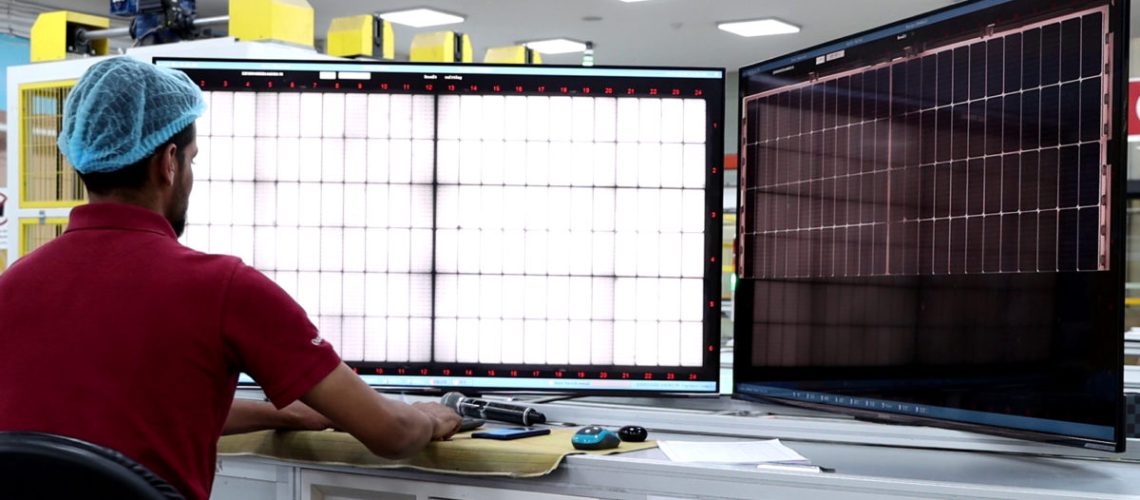The Inflation Reduction Act (IRA) opened a new door for solar manufacturers, as one of the executives behind a Philadelphia Solar to bring PV production to the U.S. explains.
From pv magazine global
There is no question the Inflation Reduction Act has been financially attractive for solar manufacturers, opening a door to opportunity that has never existed before.
For manufacturers, the bill contains tax incentives for domestic fabrication, including an increase in the investment tax credit available, from 30% to 40% for projects using domestic content, as well as production tax credits linked to specific products. But the real benefit is the timeframe, which extends the bill’s credits and incentives for 10 years, making manufacturing investment tenable for the first time.
Big draw
The U.S. market has always been one of the biggest that has attracted solar module suppliers. As a global manufacturer of solar modules and mounting structures, Philadelphia Solar has had its sights set on this market for years. We see the future being not just in supplying modules but in investing in the U.S. to set up domestic manufacturing capacity. We took serious steps towards this in 2020 by putting a bid on a building in Texas to set up U.S. manufacturing operations. However, we pulled back because of changes in regulation – namely the cancellation of Section 201 trade tariffs on imported bifacial solar modules. The exclusion of bifacial products from a trade tariff imposed because of the volume of imports, meant that, if we were to invest in production capacity for U.S.-made bifacial modules, we would have faced extreme pricing headwinds from imported bifacial products. In the absence of any other incentives, our return on investment would have been untenable.
As a multinational tier-1 solar module manufacturer, it would have made more sense for us to export our monocrystalline PERC (passivated emitter, rear contact) modules to the US market, rather than manufacturing them in-country. Of course, that would also have meant that the supply of bifacial panels to the U.S. market would have continued to be subject to supply-chain pressures which, even while remaining unknown, still presented a lower risk to us than the investment required to set up US manufacturing in the pre-IRA trading environment.
Policy certainty
To be clear, the only way to bring stability to the U.S. solar market is to open doors for high-quality, U.S. -made solar modules, particularly monocrystalline bifacial modules, which are widely seen as essential for utility scale solar development. The lessons of the past few years have taught the world that energy independence must be based on viable local sources. Currently, the U.S. solar market is dominated by outside manufacturers, including those accused of price dumping. While efforts have been made to curtail unfair trade practices, U.S. trade regulations are imposed for two years before they are reviewed. A judge can stop these at any time, making the long-term investment necessary to set up viable manufacturing facilities too risky. Investment in U.S. manufacturing, by companies like ours, is critical to bringing true energy independence to the U.S. and it requires a much longer investment period than the usual regulatory cycles allow.
The IRA dramatically changed all this. The 10-year timeline for the bill’s provisions has brought us clarity over an extended period for the first time. Now we can move forward with confidence in implementing a two-pronged strategy that aligns perfectly with the U.S. market and its solar ambitions.
Through a joint-venture with U.S.-based Translucent Energy, we can immediately offer competitively-priced, high-quality bifacial and black modules made in our Middle East facility, to meet the current market demands for these panels. At the same time, by moving forward on our plans to set up domestic manufacturing under the Philadelphia Solar USA brand name, we are on track to supply U.S.-made monocrystalline PERC units by 2024 at a better price point. We also are actively transitioning all our manufacturing facilities to heterojunction (HJT) solar manufacturing, so we will be able to bring higher-efficiency domestic modules at increasingly lower price points by 2025.
In the long run, we are hoping for more than just the IRA. Of the 11 raw materials we need to build a panel in the U.S., seven need to be imported and all of these are currently subject to tariffs.
The IRA’s tax credits and other incentives are attractive enough to offset such trade measures but it’s critical to understand that almost half of the cash we will receive back through the IRA will go to pay customs duties on raw materials. With the remaining 50% of tax-related cashback, we will still be profitable producing a U.S.-made panel that can compete with bifacial imports that continue to be excluded from Section 201 tariffs. The margins are slim, however.
As domestic U.S. production accelerates, there is a reasonable expectation that the bifacial exception from 201 tariffs will not be extended past its current term. Reimposing such duties would bring greater profitability to U.S.-based manufacturers in the near future. This is essential. While we are excited to be playing an active role in bringing a clean and independent energy future to the U.S. we, like all the manufacturers involved, must also be profitable if that future is to be sustainable.
About the author: Mohammad Shehadeh is chief commercial officer for Jordanian solar panel and mounting structure manufacturer Philadelphia Solar, which has formed a joint venture with US module manufacturing new entrant Translucent Energy to develop solar production capacity in the United States.






